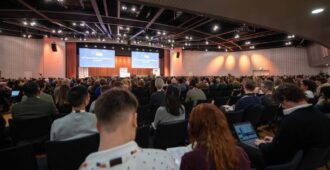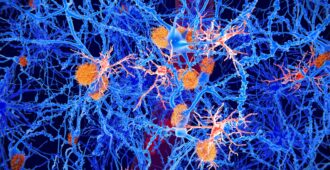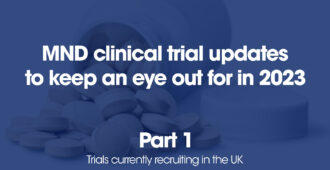The Opening Session theme on how the disease progresses within the Central Nervous System (CNS) continued with the presentation by Prof Stan Appel from Baylor College of Medicine, Huston on neuroinflammation.
Examination of post-mortem brain and spinal cords from people with MND shows clear evidence of inflammation (although Prof Appel was quick to point out that this is not the same as occurs in ‘primary’ inflammatory conditions such as multiple sclerosis). Similar patterns are seen in human MND spinal cord and in SOD1 mice, suggesting that at least for this aspect of the disease, SOD1 mice may be a good model of human MND.
He went on to explain how migroglia, the ‘innate’ immune cells of the CNS, help mediate a delicate balance between protection and damage. The speed of progression in MND appears to be dictated by this balance.
Prof Appel showed that SOD1 mice exhibit two phases of disease: an early slow phase, where the microglia release a series of protective factors, and a rapid secondary progressive phase where levels of these protective markers fall and are replaced by a rise in ‘pro-inflammatory’ toxic factors. Of course, strains of lab mice are so inbred that they are genetically very similar and develop the disease in a uniform manner. Humans on the other hand are very different, as is the way the disease progresses between one individual and the next, so the two stages of disease are not easy to demonstrate in MND patients. However, by examining the inflammatory factors present in patients with very rapid progression against those with slower progression, he was able to show that the factors associated with the second ‘rapid progression’ phase in mice were also present in the rapidly progressing patients. He suggested that this may assist clinicians in predicting how the disease is likely to progress in patients at an early stage in the disease.
It is relatively easy in cell culture studies to tilt this balance from protective to toxic, but could the balance be tilted the other way in patients, as a therapeutic strategy? Certainly, in response to a question from the floor, he suggested that greater attempts should be made in this direction, commenting, “The whole issue of immunosuppressant drugs in MND needs to be re-opened. But – you can’t just take down all immune responses in an uncontrolled way. You need drugs that are much more selective”.
Read our official day one symposium press release on our website.






Comments are closed.